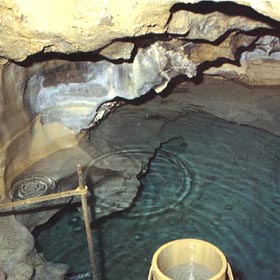- Start / Language
- HHO powered Powerplant
- HHO Systems in Cars
- Geothermal Energy
- Geotherm in Romania
- Partner and Links
- Sponsoring
Thermalwater and Geotherm
Overview
Thermalwater, with more or less high temperatures, are used in certain regions of Switzerland to therapeutic or also for leisure purposes. They represent water circulations in relatively deep-layers. There are several thermale mechanisms, which use the heat surplus for heating the buildings.
 Thermalwater was already used in the antique centuries
Thermalwater was already used in the antique centuries
The designation “Thermalwasser “does not represent a precise definition, although the Greek word ‚thermae' etymologically is the meaning of warmth. In the colloquial language the word “thermal“ is used in relation with warm and also cold, both minerals-containing and no-minerals-containing water, as far as this is used for therapeutic purposes. Here however is only meant warm groundwater when we talk about “Thermalwater“.
Thermalwater was already used in the antique centuries. Remnants of wells, public baths or even coins close to hot sources were found in Italy, Greece, France and in other countries, which can be antedated up to 3000 before Chr.. Specially the Romans used Thermal- and Mineralwater for different purposes systematically. In close proximity to thermal springs cities were built, whose name points this very day to their origin: Aachen (D), Aix EN Provence (F), Bath (UK) or Baden (CH).
 Archaeological places from the Roman time prove that the hot water was not
only used for bathing purposes locally, but also supported in pipelines to
pools for the use of floor-heating systems in houses. Thus geothermal
heaters exist already for more than 2000 years!
Archaeological places from the Roman time prove that the hot water was not
only used for bathing purposes locally, but also supported in pipelines to
pools for the use of floor-heating systems in houses. Thus geothermal
heaters exist already for more than 2000 years!
In Chaudes Aigues, a village in the south of the french central-massif, in the year of 1332 the world-wide first urban heat net was found. The 82°C hot Thermalwater was supplied through wooden waterpipelines into the houses
.
.
.